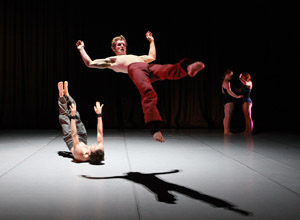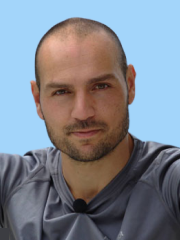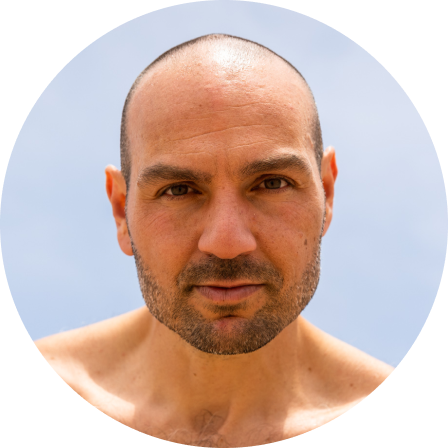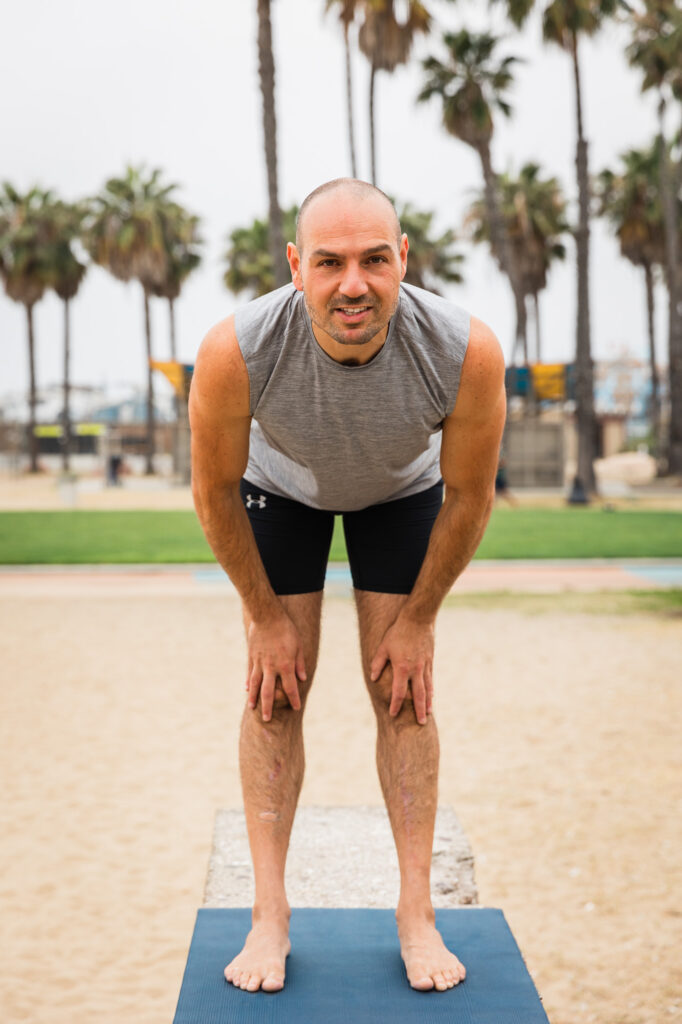Playing with Horizontal Skill Development versus constantly muscling through vertically

I am going to share with the things I learned from this podcast episode featuring Lewie West. Oh and before I continue, if you don’t know who Lewie West is, watch this:
A lot of what you see in his videos, like the one above, are a result of HORIZONTAL (or lateral) skill development. We will delve into what that means and why this is clearly awesome.
Lewie West, ~30min into the podcast says…
- You don’t need a high skill level to start playing around.
- You don’t need to be good at something to be creative with it.
- So much of the tumbling I do is built on the easiest tricks: the tricks you learn first like forward rolls and back rolls.
“I think people skip those a lot trying to get to the more impressive tricks. They may say, ‘Oh I could do a forward roll now, so I’m going to go to the next progression and then the next until I could do a round off back salt.’ But all those simpler basic tricks have variations that are very interesting and challenging. There are some VERY difficult variations of a forward roll, which are VERY fun and you might miss out on if you go straight to the next thing. Play ‘horizontally’ with the basics there and get really good at them before building your vertical skill level.”
Examples of Vertical versus Horizontal Skill Development
Horizontal skill development has nothing to do with the horizontal-axis. It’s just a concept in regards to skill development. Another way to think of it is:
- Horizontal development = Skill Work
- Vertical development = Strength work (much more fatiguing)
I hope the following examples help make it clearer.
In regards to handstands:
- Vertically: Learning a freestanding HS and then trying to achieve a one arm handstand after that.
- Horizontally: Learning the freestanding HS and then playing around with mastering the 4 different ways of entering it (kick up with one leg, tuck up, straddle up, pike up).
In regards to muscle ups:
- Vertically would be learning a muscle up and then trying to achieve a wide-armed muscle up.
- Horizontally would be learning the muscle up, and then learning the kip up to support.
So instead of always going for the more “advanced” thing, master variations surrounding the foundation to increase your movement complexity.
Lewie West (~35min in): Yes you may need to work on your vertical development if you’re new and don’t have much strength, but once you have a good base of strength, don’t move past these basic skills and ignore them. Get creative with them. That creative thinking is just another muscle. You just have to start and play around.
One of the things I did a lot was, and this is kind of like a cheat-code, was whenever I learned a new skill, I then tried to get into and out of that skill using every other skill that I already knew. (Can I get into that from a back roll? How about with a twist? etc.) So you learned a back roll? Don’t go to the next “harder” move (like a back flip). Instead, master all the variations of a back roll and master things along that level of difficulty. If you don’t play “horizontally” with the basics and get creative there, you’re going to have trouble with the advanced things.
Question to Lewie: Do you train vigorously? Or is it all just exploration and accumulation?
Lewie West: Because I’m constantly touring with the circus school, that doesn’t leave much extra energy for vigorous strength training and I have to be careful so I don’t do a lot of vigorous training. I do a lot of warming up, prehab/rehab and listening to my body and then going into the skill work and then after that I have to fit in my own training and I have to customize that because I have to be physically sound for the show. And that limits the amount of my strict strength training. But it’s a lot easier to work on the horizontal skill development because you already have the skills and you’re simply pulling them apart and putting them together so it’s a lot less muscle usage.
Question to Lewie: Can you expand on how you “listen to your body” and not injure yourself in a typical training session?
Lewie West: I start with a very good warm up with a little bit of stretching, theraband exercises, listening to my body. As I go through these things, I understand if I need to go easy today or if I feel like I have a lot of excess energy. And this varies a lot day by day. I would “scan” through my body and limber up. If my wrist is sore I’d do my wrist rehab. If I’m scared of rolling my ankles, I will give them some attention to make sure they’re switched on. Then, let’s say I wanna work on chinese pole that day, I would do some basics: like try out climbing the pole in a few ways, try some static holds. Then I would choose a certain kind of trick, like acrobatically entering the pole and hugging around the pole and trying many variations of that. Then moving onto handstand creative work around the base of the pole.
I also tend to not persevere with things if I feel it’s not being helpful. I often have a plan going into the training session: ‘I wanna try this and this and this.’ If my mind and body are working really well with tumbling that day, for example, and I’ve written down that I’m also gonna try handstand work, maybe I’ll just skip that handstand work and just keep tumbling because that’s working out really well that day.
Or vice versa: If I start tumbling and my body doesn’t feel good and it’s not responding the way I want it to that day, I’ll move onto something that’s different. So I’ll move onto handstands, cause that’s different. But if that feels dodgy too, then I’ll move onto juggling and that’s safe and I know I’m not going to hurt myself doing but I could still feel creative and push myself in new ways in that area.
Host replies with: So if your shoulder feels bad and you decide that you’re just going to push it regardless, then you’re just going to make things worse. This becomes a self-preservation concept that is necessary for longevity. This isn’t a gymnastics competition where you are building yourself up and up and up and destroying your body for that one competition and then after that you could do nothing. No. You need to train for a lifetime.
Also, for you more advanced folks trying to program undulating periodization for strength training: If you implement this concept, your programming will be effortless because the accumulation phase is horizontal skill development and the intensification phase is vertical skill development.
In light of this… here’s a detailed breakdown of some things I’ll be working on ‘horizontally’ so you can too: Back Rolls and Headstand
Back rolls don’t take tons energy for me to do. Neither do tripod headstands since I’ve gotten used to them. Both are super fun for me. So I’ll be playing with mastering these things with the spirit of Lewie West inside me.
Back Rolls: I will learn the basic variations by following Ryan Hurst’s quick video tutorial:
Video Breakdown:
- Back roll while sitting on the ground and zero momentum
- Back roll while sitting with a little more momentum
- Back roll from a squat position
- Back roll from a standing to squat position
- Back roll and kick up your feet into a handstand
- Back roll into a handstand and then roll back into a forward roll
Headstands: In this video below, yoga teacher Nichi Green demonstrates 7 Headstand variations and each time gets out of it by quickly shifting into a tripod headstand and going down into chaturanga (partway into the push up position).
https://www.youtube.com/watch?v=AstQwwWrdvw
Video Breakdown:
- Tripod headstand
- Back of Hands Headstand
- Wide Armed Headstand
- Bound Headstand
- Opposite Elbow Bound
- Forearm Headstand
- Hands to Shoulder Headstand
In conclusion… movement complexity is king, yet again.
A lot of this ties into my other blog post where I talk about how I went from playing around, to getting too serious with strength training, and then going back to realizing (rediscovering, really), that Play and Variety is the Spice of Life. This horizontal versus vertical development simply refines this concept of play and skill development even further. And please, if you haven’t already, don’t forget to check out the skill work section in The Floreio Project where I’ve organized all of Ido Portals work to increase your movement repertoire.






